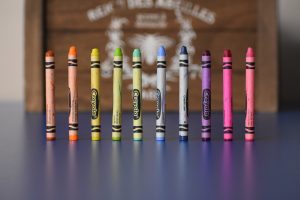Your beautiful toddler is showing signs that she wants to communicate but she needs a little help. In this post, I provide you with easy strategies to get your toddler talking. You watch her point to things and smile but she’s not labeling objects frequently. Well, I have easy tips that you can do everywhere you go.
1. HOLD IT UP!
When talking with your toddler, emphasize the word you want to teach by holding up the toy next to your mouth. What does this do? It helps your child to see the object as well as see the movement of your lips as you say the word. Sitting in front of your child during play helps establish good eye contact.
2. WAIT FOR ME, MOMMY!
Pay attention to how you talk with your child. Are you frequently asking your child to answer questions while playing games (i.e. what’s that, what’s this, what’s that called)? Are you asking your child to repeat words all the time (i.e. say car, say ball, say water)? If so, I’d like to invite you to stop and wait. Try a sprinkle of questions/requests and a handful of modeling. Say the word you want your child to repeat and wait a few seconds to see if they attempt to imitate. Use a lot more modeling.
What do I mean by modeling? While playing with a racecar and trying to teach the word car, frequently say short phrases that contain the word car (remember, HOLD IT UP). This allows you to model the name of the object during play. After you’ve said the word car several times, you could check for comprehension by saying, “give me the car” and point to the car if necessary. See the example phrases below:
1. Vroom-vroom fast car.
2. Blue car.
3. Go car!
4. Car stopped.
5. Where’s car?
3. TALK ABOUT IT – TALK ALL ABOUT IT!
When playing with your toddler, talk about what you are doing and about what your child is doing. Pretend you are a narrator in a book and you are describing what is happening to a toddler. Use adult language but keep the phrase length and vocabulary appropriate for your child. Instead of saying, “The racecar is going extremely fast, it’s going to crash,” try saying, “Oh-no, too fast!” and “The racecar will crash!” Some children will benefit from even shorter phrases like, “too fast!” and “car crashed!”
4. SING ME A SONG!
Toddlers love music and singing. Music is a great tool for teaching and learning language. It helps keep children engaged in educational activities and best of all it is fun. Make up songs about routine activities and actions during play. For example, if playing with bubbles you could make up a little song using the phrases, “pop-pop-pop the bubbles are going to pop, up and down, the bubbles are going to pop.” Combine movement into your songs. Using the same example above you could move your hands up and down as you sing the words “up and down.” Imitation of movement can help develop imitation of sounds and words.
5. A LITTLE EVIL, BUT THAT’S OK!
This technique involves purposefully setting your children up for the need to communicate. You have to be careful not to cause too much frustration. You will know how much is too much for your child.
Here are a couple of examples of what I mean:
1. When giving your child a new toy, don’t open the package or partially open the package. Walk away but remain nearby. Chances are, your child will need help opening the package. This will hopefully prompt him/her to communicate. When you notice your child struggling, approach and model what you want your child to say. You could teach vocabulary and phrases such as open, cut, help, hard, out, you open, open toy, help me, thank you, please, dad help, need help, I cut, etc.
2. When your child asks for a drink, give him/her an empty cup. Wait a few seconds to see if your child will say things like water or juice. If not, approach your child and model the use of words and phrases like juice, water, empty, need water, need juice, cup empty, etc.
Now that you have some ideas, go practice and have fun! Be silly and follow your child’s lead during play.
Do you have questions about what your child should be doing? Check out our Expressive Language and Receptive Language developmental milestones by the the links.
Photo on Visual Hunt
Looking forward to answering your questions in the comments below!




